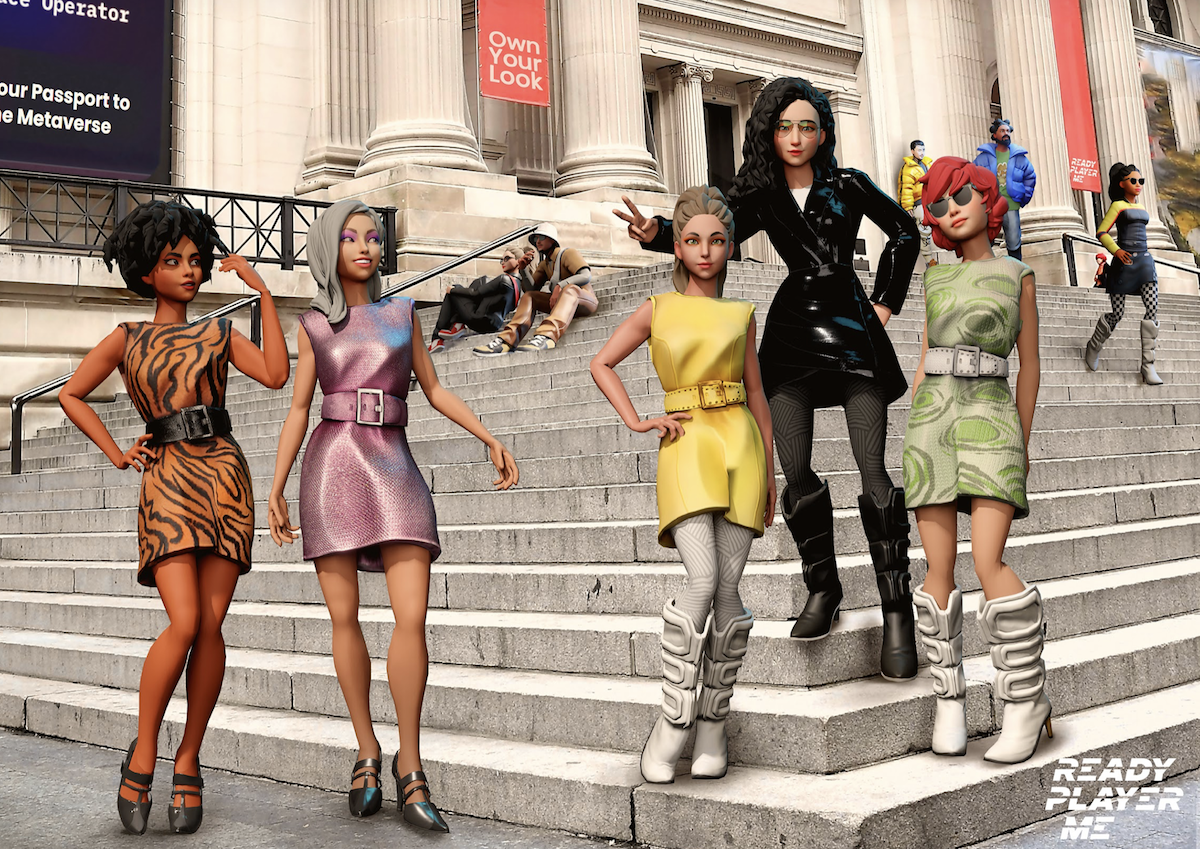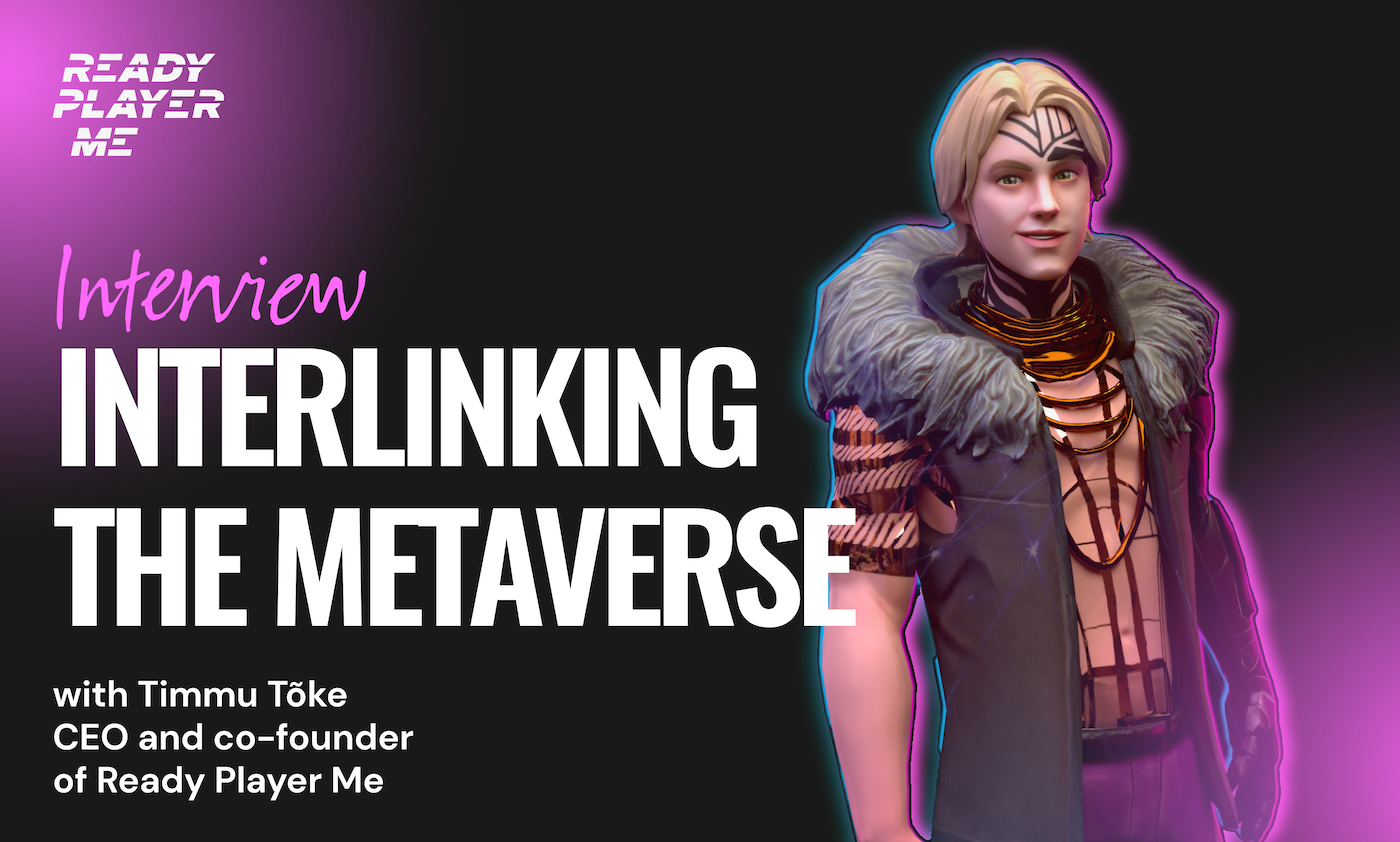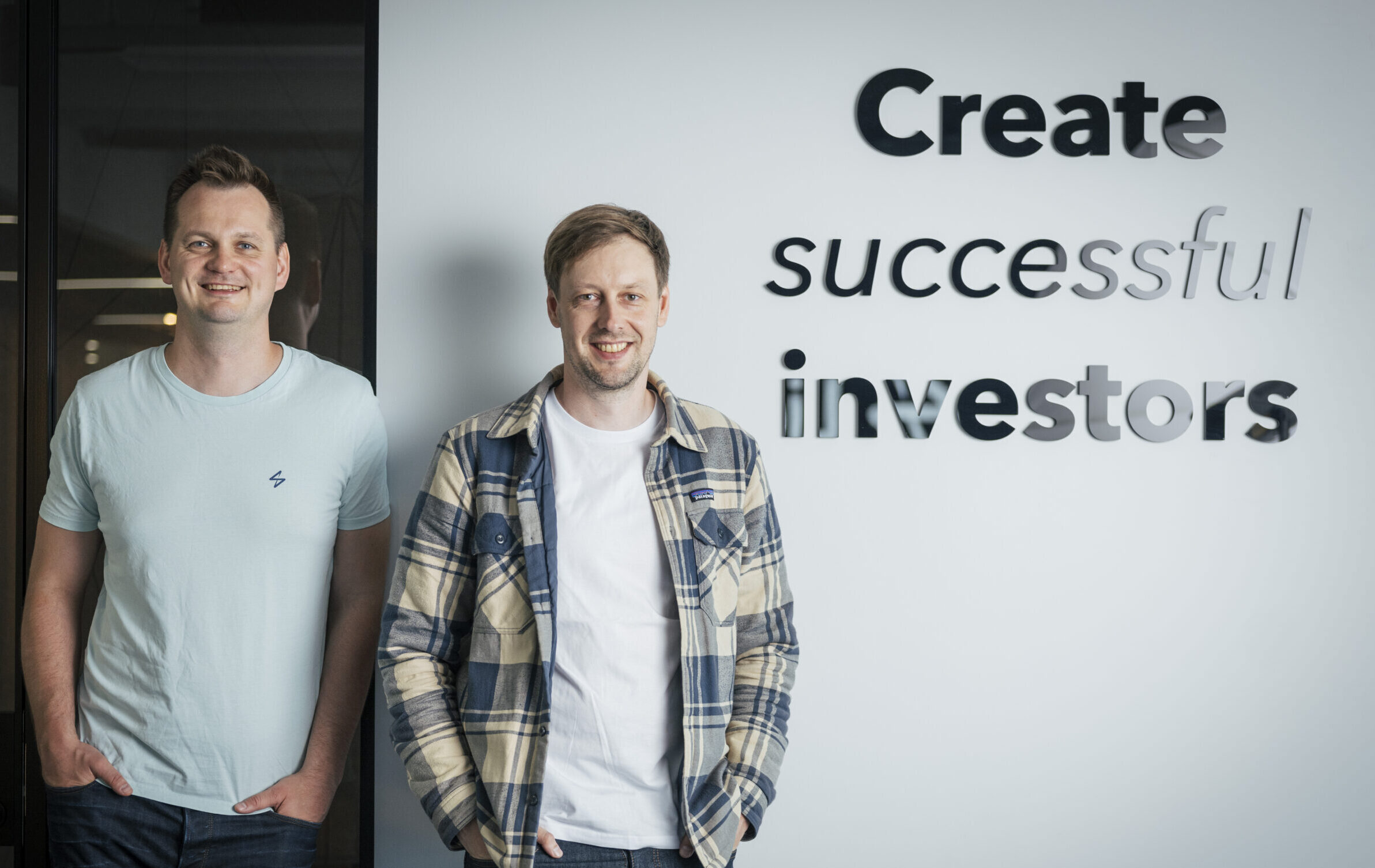An interview with Timmu Tõke, CEO and co-founder of Ready Player Me.
Ready Player Me is a cross-game avatar platform that allows users to explore virtual worlds with one consistent identity. The company serves over 3,000 apps across the Web (including Web3) and works with individual creators and fashion brands such as Adidas, New Balance, Dior, and Warner Brothers.
We sat down with Timmu to discuss what led to RPM’s exponential growth, the biggest lessons discovered to date and where to next for cross-game avatars and the metaverse.
Since establishing your company in 2014, you’ve had quite the journey before creating one of the fastest-growing avatar platforms. You’ve built 3D scanners and developed avatars for enterprises. Could you start by sharing the story behind the company and how your views towards avatars have developed over the years?
We started by messing around with 3D printing about nine years ago, and that was just a fun pastime at school. 3D printing led us into 3D scanning, first with objects, then with people. So with that background, we built some prototypes.
When Oculus was acquired by Facebook, we realized VR was going to be big and social – because it’s Facebook. Additionally, in VR you need an avatar to be represented in that space. You need an avatar to communicate with someone else in a virtual space.
Therefore, at RPM we realised building avatars was a huge opportunity. However, the substantial problem back then was that there was no way to create a good avatar of yourself. As a result, we decided to solve that problem. At RPM, we started by building hardware scanners – we scanned tens of thousands of people with hardware and built a massive database of scans. We used that database to build a deep learning solution that would allow users to take a single selfie of themselves and convert this selfie into different styles of avatars.
Subsequently, we at RPM moved away from the hardware business and started selling SDKs (Software Development Kit)’s to gaming companies. This resulted in a need by those companies for an entire avatar system around this SDK, from body types, shapes, clothing systems, hair animation systems, and everything in between. So we started custom building avatar systems for our customers.
For the next four years, we built custom avatar systems for big companies. Building these custom avatar systems felt like creating different game engines. Additionally, these four years taught us what it takes to build a good avatar system. Over time, our business was validated by becoming cash flow positive.
Unfortunately, over time we realized this business was not scalable. We needed to make avatars travel between experiences, which is how we came up with the idea of Ready Player Me (RPM). RPM gave developers the tools to integrate avatars into their ecosystems.
As a result, we dropped the initial enterprise business, raised a small seed round in 2020 to build Ready Player Me (RPM), and launched RPM in May 2020. In a year we had 24 companies using the product, and by the end of 2021, it was 1,000 companies. Today we have over 3,000 companies using RPM, with adoption by new companies forecast to continue.
Over the years, the views towards avatars have changed a lot, including the way people want to use avatars and the types of avatars people want to use.

So RPM’s story is of persistence, focusing on what you do best yet always tracking where the industry is going. What were some of the biggest lessons learned in the first 6-7 years before RPM took off?
We remind ourselves we came from nowhere, knowing nothing. So we took time just to grind and learn and build and experiment. And every year we experimented, we built another product better than the previous one. And over time, we became experts in avatars.
We always believed that our ideas were important. We always believed people would increase the time spent in virtual worlds and eventually the market would catch up. Before we knew it, RPM was one of the only experts in something that the market needed. And where there is demand and limited supply, naturally any business will benefit.
I’m not sure if it’s something I would repeat. I think if you’re a very young founder, then that’s a solid strategy. But that kind of persistence can also be non-productive. For example, if what you are working on is not working, you should stop working on that and work on something else. The difficulty is identifying when something is not working. This difficulty is compounded because Nordic founders are naturally persistent individuals. I don’t know what the advantages are, it depends on yourself and your background and the options you have on the table. For the founders here at RPM, it felt like it was a good idea to pursue.
RPM is set to interlink the metaverse to a more open environment, rather than just having a few closed walled gardens. How do you see the status of the metaverse today and how do you expect it to develop in the future?
At RPM we see two potential futures for the metaverse: One is that we will live in one closed big world, built by a big company. The other potential future, in contrast, is that we’ll have an open metaverse (with multiple worlds) that is built by millions of different developers. We envision users will be able to travel between these multiple worlds. That’s how avatars move between many different worlds today. In the second potential future, the metaverse will not be owned by any one entity nor controlled by any one company.
At RPM, we think the open metaverse is needed for us to have a positive future. For the metaverse to happen, cross-game, cross-world services, protocols and standards need to be built and authors are an essential part of that. So avatars are essential for anyone. It’s essential for anyone to get an avatar that they love and can use across many different virtual worlds. By building avatars, we’re connecting those worlds. Here at RPM, we are nudging the world towards the open metaverse. That’s how we think about it.
Today ‘metaverse’ is such an overused word. Of course, on one side, people spend a lot of time in virtual worlds. Already there are three billion people that play games in virtual worlds every year. But on the other hand, those virtual worlds are like walled gardens or closed worlds. There are a lot of different games and apps and experiences, but they’re not interlinked.
That’s what’s missing from our point of view in the metaverse. For building the ‘real’ metaverse, as RPM sees it, the metaverse needs to feel like a consistent experience across many different worlds.
RPM offers various services within metaverse and you’ve worked with partners like Warner Brothers (Dune movie), Roblox and Dior. What are your favorite outcomes so far from these partnerships and what dreams do you have for potential future projects?
Our key focus is on the builders and creators of the metaverse platforms, games, virtual worlds and so forth. We work with them to give them an avatar system. With an avatar system, builders and creators can integrate easily into the game and save a lot of time. In the future, this will allow builders and creators to participate in the cross-game kind of metaverse economy.
At RPM we aim for varied outcomes. We are very proud to work with VR Chat, Hyper, Pixel links, and many others including fashion brands. Seeing these brands use and benefit from RPM’s technology is great. The number one thing I think about is how we can get the next level of quality of developers. How can we get more people to use the product? We’d love RPM to become the default avatar system for the metaverse and to be used by all developers. Therefore our dream for future projects is to continue to provide immense value for developers and make sure RPM is easily found.
For those founders who are still wondering about working on the metaverse, what would you encourage those individuals to study and what areas of exciting opportunities do you find still untapped? What problems do you see still need to be solved for the metaverse?
For the founders looking into the metaverse space, I would say: start as a user. Start as a user of all the different worlds and apps and try to understand how these worlds work today. Get a feel for what’s broken and what’s missing and what the problems are. Likewise, for cryptocurrency, NFTs, and Web3 – become a user, use all the things that are out there and they’ll give you some perspective on what needs to be solved.
These are new industries in their infancy and they are going to be a big part of our lives. I’m sure there are a gazillion opportunities in the space, but some of them are probably not obvious. And I think the biggest opportunities are the ones that we’re not thinking about, the same as with every kind of new tech wave. We just don’t know what will work. So it’s about getting in, experimenting, trying different things, and hopefully finding something that works for you.
Text by Rainer Sternfeld and Claes Mikko Nilsen.
With NordicNinja, we believe that web3 solutions will be an essential part of the future and that Ready Player Me will play a crucial part of making the metaverse more transparent. We therefore co-led Ready Player Me’s series A late 2021 together with Taavet+Sten. In August 2022 RPM closed an additional $56M Series B round led by Andreessen Horowitz (a16z), together with David Baszucki, co-founder of Roblox, Justin Kan, co-founder of Twitch, Riccardo Zacconi, and King Games co-founders, and other notable investors.


